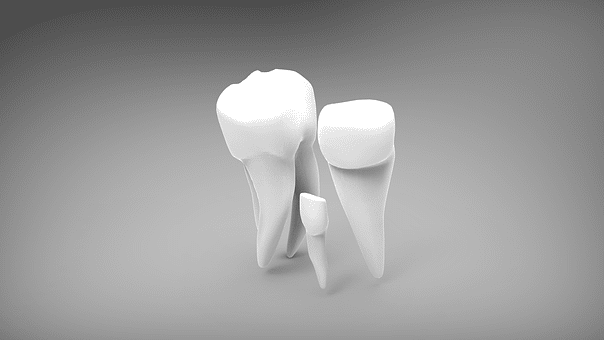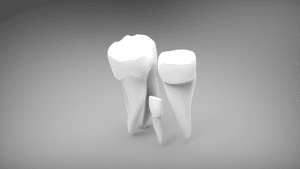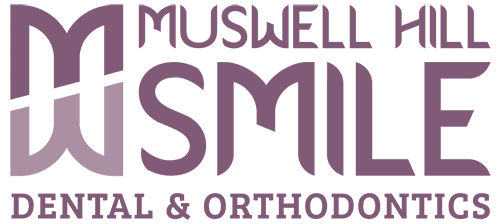
Macrodontia is derived from the word “macro” which means large and “dont” which refers to tooth or teeth. Macrodontia means a condition whereby a tooth or a group of teeth is abnormally larger than usual.
Macrodontia can be a true generalized and affect all teeth. It is a rare condition and can occasionally be seen in people with pituitary gigantism, or excess growth hormones. It can be a relative generalized macrodontia, this is a result of inheritance from 2 parents, where the size of teeth can be inherited from one parent, while the size of the jaw is inherited from the other parent. Macrodontia can also affect only a single tooth, though it is rather uncommonly seen.

This anomaly isn’t something that suddenly happens to an adult, but rather occurs while teeth grow in. This is why most often; the anomaly is an area of study in pediatric dentistry. Macrodontia is associated with several syndromes, including KBG syndrome, Klinefelter syndrome, and hemihyperplasia. However, the most common cause of macrodontia in children comes down to genetics. Family lines with developmental disabilities might also have macrodontia, sometimes between generations or also among siblings. Studies also show ethnicity can be a factor, with higher incidences in Asian populations. Also, the condition is more common in males than in females.
Macrodontia often has fewer complications when compared to more serious problems, such as a cleft palate. In fact, many adults who have dealt with macrodontia since childhood continue along and avoid all problems and side effects. That said, there are a few reasons you might consider treatment of the anomaly. Some patients get treatment to:
- Correct improper bite alignment
- Eliminate jaw joint pain caused by irregular bite
- Prevent cavities on irregular surfaces of teeth
- Improve overall appearance.
The dentist diagnosis macrodontian by simple observation, measurement, and comparison with standard tooth size. If the tooth overfills its space in the dental arch it could cause crowding, rotation, and misalignment of adjacent teeth. To prevent disturbances in the arch and problems with occlusion, most dentists recommend early treatment. Teeth affected by macrodontia are either stripped (during an orthodontic treatment) or extracted. When extracted, they are replaced with an implant or bridge




